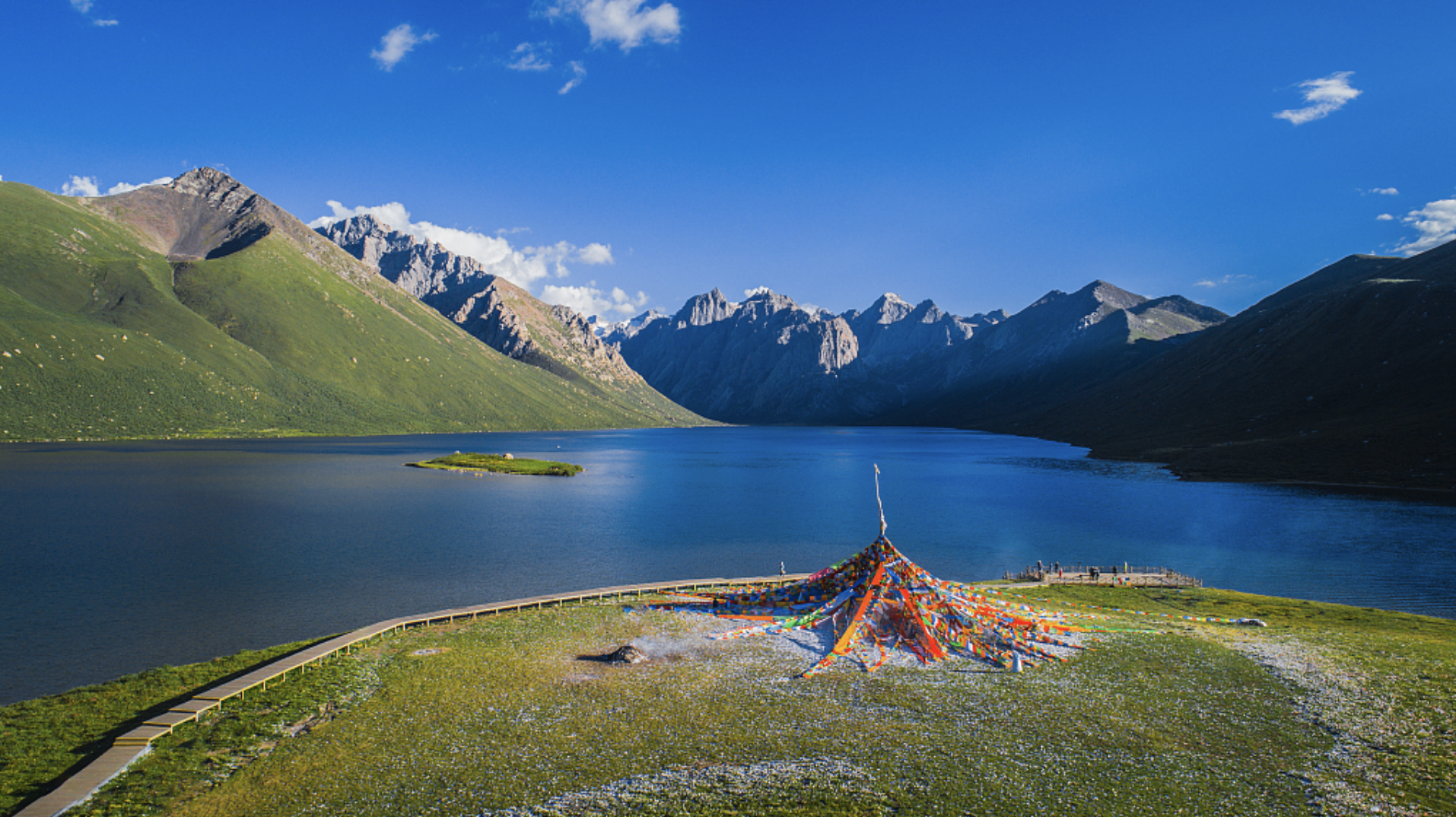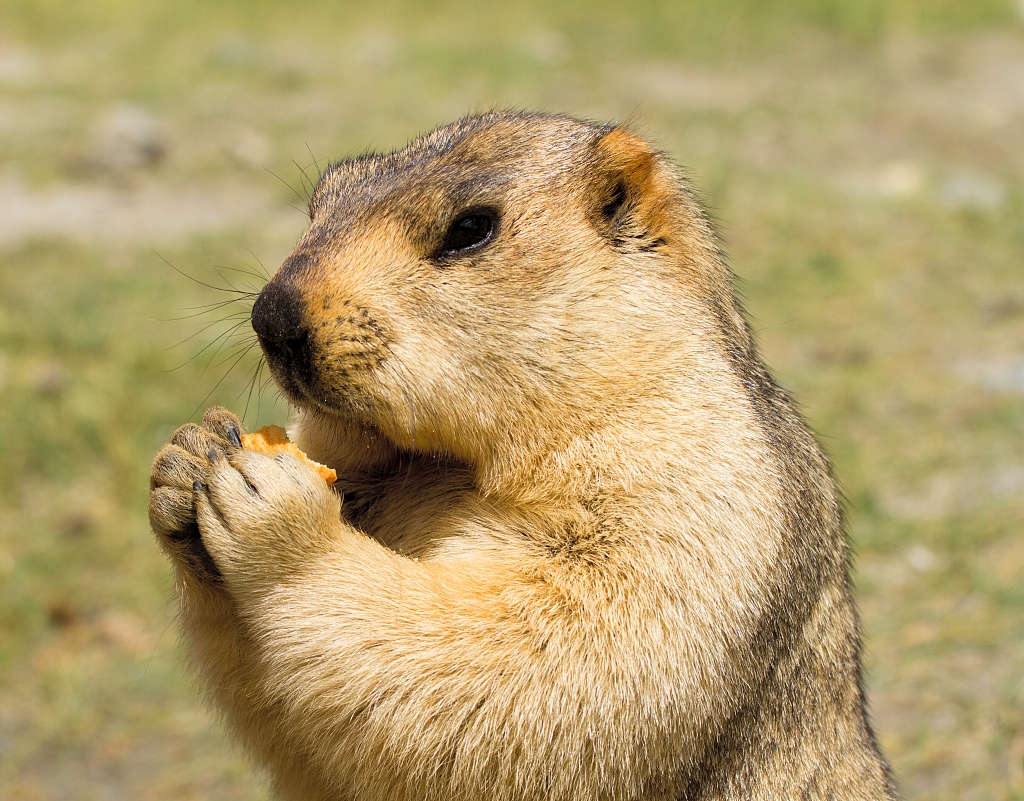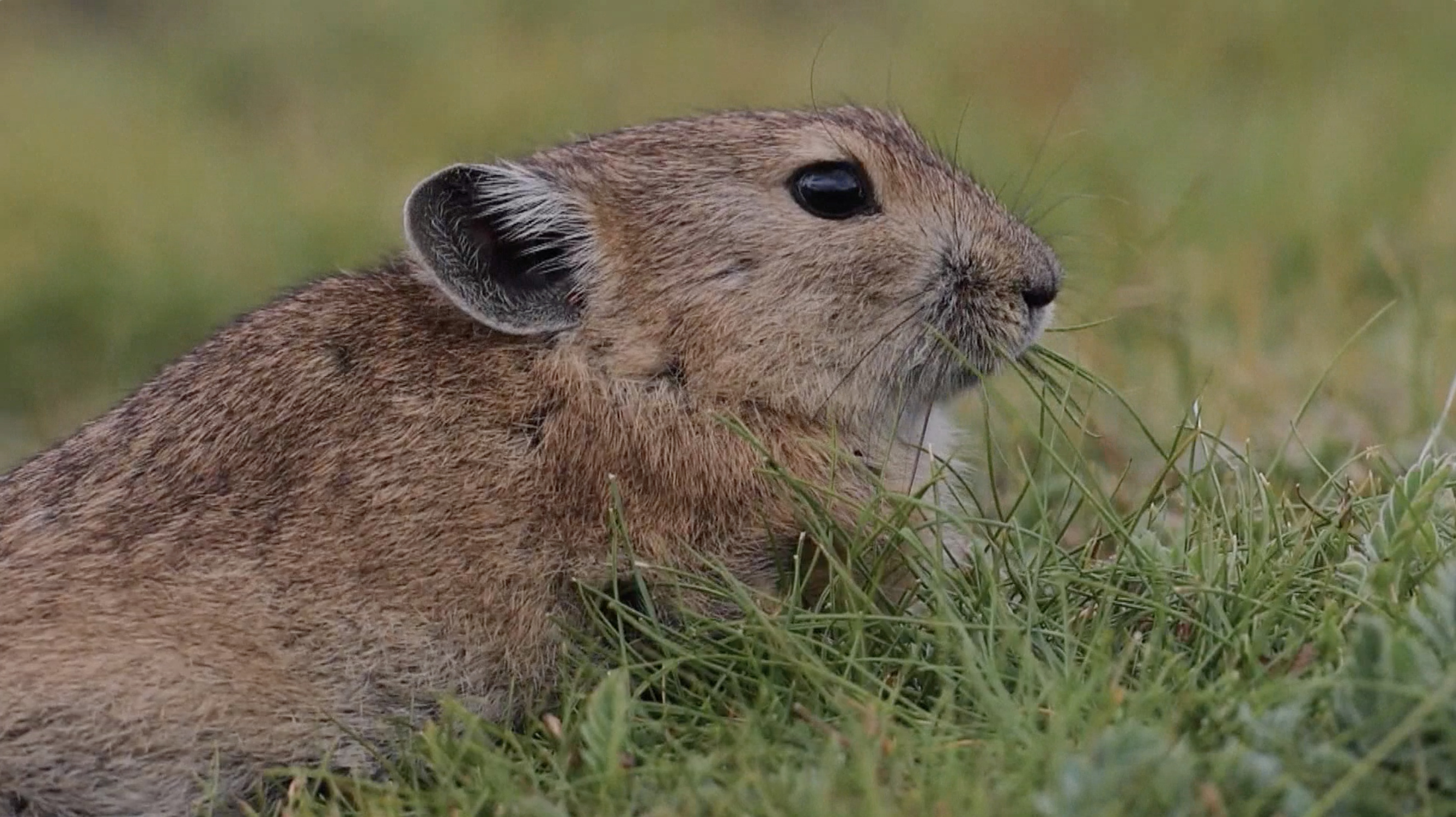01:01

Sanjiangyuan, meaning "the source of three rivers," in northwest China is one of the regions with the most complete food chain in the world, according to a research conducted by Peking University.
Researchers from the university's School of Life Science reached the conclusion after analyzing hundreds of thousands of photos and surveillance videos filmed in recent years. Also, the Qinghai-Tibet Plateau, where the three-river-source area lies, enjoys rich biodiversity with large carnivores species, according to the research.
Marmot used to be a target of culling on the plateau due its habit of gnawing and digging holes on meadow. But the holes created by marmot have been important for other animals such as desert cats, Tibetan fox, manul and even some birds to hide and breed.

"Marmot is the engineer of Qinghai-Tibet Plateau. They build houses, and many animals enjoy the space they create," said Lyu Zhi, professor at the School of Life Science in Peking University.
Marmot is also an important source of food for more than a dozen large carnivores. Another small animal with similar features is pika. Pika, once culled for being a meadow destroyer, plays an important role in the ecological system on the plateau.
"There are over 30 species feeding on pika or at least consuming pika as part of their food, including birds such as hawk, owl, buteo and golden eagle. So without pika, animals at the top of the food chain won't survive," said Lyu.

According to experts, today's meadow administration prefers to deal with these animals by introducing their natural enemies rather than culling, as from the perspective of maintaining the harmony of the plateau's ecological chain, it is a better and more effective way to ensure that the nature strikes a balance by itself.
The research also shows that eight species of large carnivores are living on the Qinghai-Tibet Plateau, namely gray wolf, jackal, snow leopard, clouded leopard, leopard, lynx, brown bear and Asian black bear. Six of them have been caught on surveillance cameras in the three-river-source area.
"The Qinghai-Tibet Plateau has the richest varieties of large carnivores in the world, eight at least. In Africa, there are many lions and leopards, but there are only seven species, less than what we have in Qinghai-Tibet Plateau," said Lyu.
(Cover image via VCG)
(If you want to contribute and have specific expertise, please contact us at nature@cgtn.com.)